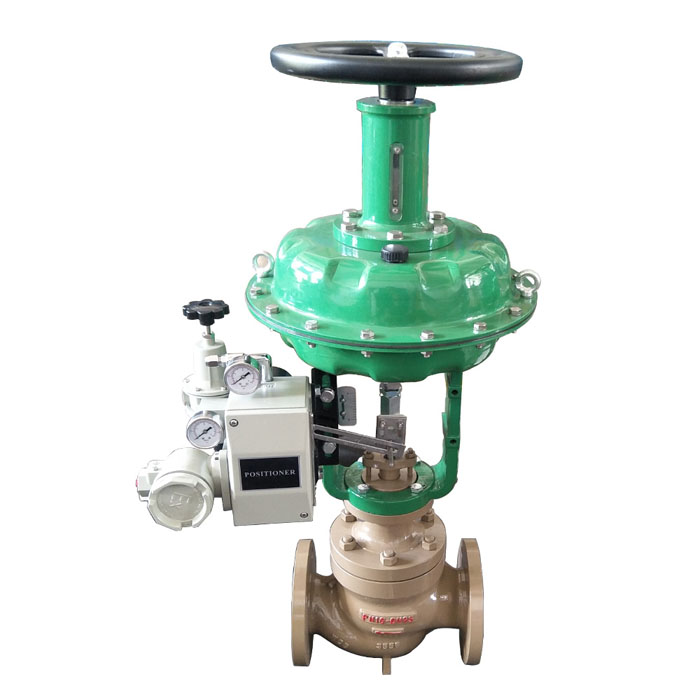How to solve the problem when the diaphragm pneumatic control valve is stuck or blocked

This passage introduce some brief and useful methods to reduce the problem of blockage of diaphragm pneumatic control valves.
1. Cleaning
Diaphragm pneumatic control valves are blocked or jammed by the welding slag and rustin the pipeline in the orifice, the guiding part and the balance hole of the lower bonnet, causing strain and scratches on the curved surface of the valve trims as well as indentation on the sealing surface. This often happens in the early stages of the new commissioning system or after the overhaul. In this case, it must be dissembled from the pipeline for cleaning and removing the slag. If the sealing surface is damaged, it should be grinded. At the same time, the bottom plug is opened to wash off the slag falling into the lower bonnet from the balance hole, and the pipeline shall be rinsed. Before commissioning,open the control valve completely, and let the media flow through it during normal operation for a period of time.
2. External scouring
When the diaphragm pneumatic control valve is blocked or jammed at the throttle and guide holes by the media containing solid particles or is easy to precipitate, open the external gas or steam valve to complete the flushing operation without moving the control valve to make the valve operate normally.
3. Install the pipeline strainer
For small-diameter diaphragm pneumatic control valves, especially ultra-small diaphragm pneumatic control valves, the throttle gap is very small, and there should be no slag in the medium. In case of blockage, it is best to install a strainer on the pipe in front of the valve to ensure the smooth passage of the media.
4. Increase the throttling gap
If diaphragm pneumatic control valves are blocked and jammed by solid particles, the slag and rust in the medium at, choose the large throttle parts and throttle face with larege opening of cage can be used instead. Valves and sleeves of windows and openings can be easily eliminated because their throttle areas are concentrated rather than circumferentially distributed. If it is a single or double seat valve, the plunger valve core can be changed to a "V" shaped valve core, or changed to a sleeve valve. For example, if a chemical plant has a double seat valve that is often stuck, it is recommended to use the sleeve valve to solve the problem immediately.
5. Media flushing
Use the scouring force of the medium itself to take away foreign matter that are easy to precipitate and easily clog, thereby improving the anti-blocking function of the valve. Common methods are: (a) change to flow-closed type; (b) use streamlined valve body; (3) put the throttle port to the most powerful part of the flushing, and this method should pay attention to improve the erosion resistance of the material of the throttle piece.
6. Change to the angle type control valve
The straight-through flow is inverted S, the flow path is complicated, and there are many dead zones in the upper and lower chambers, which provide a place for the precipitation of the medium. The angular connection, the medium is like flowing through the 90 °C elbow, the scouring performance is good, the dead zone is small, and it is easy to design into a streamline shape. Therefore, the use of a straight-through control valve can be changed to an angle valve when it is slightly blocked.
If you are interested in more information, feel free to contact us via sales@jhflow.com.